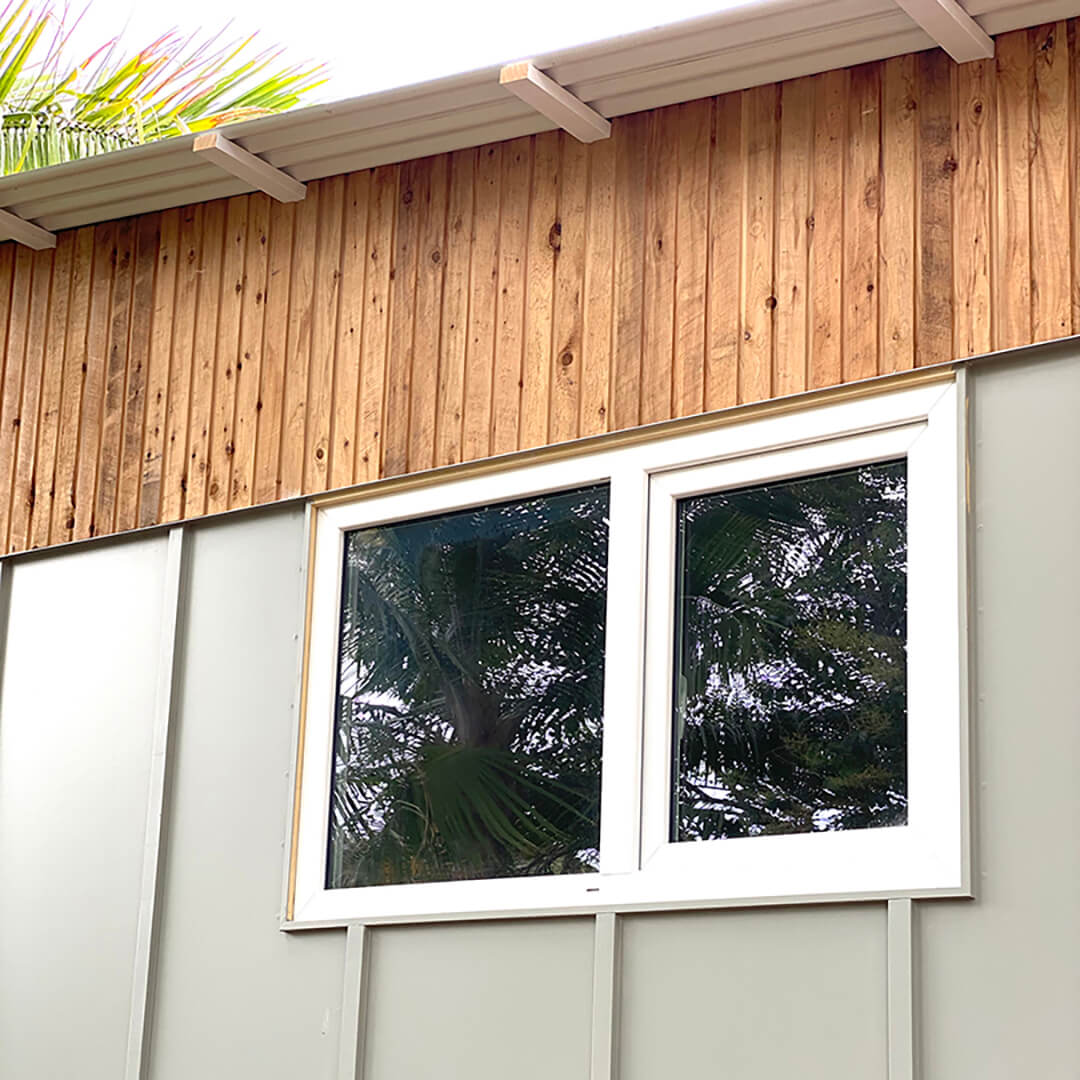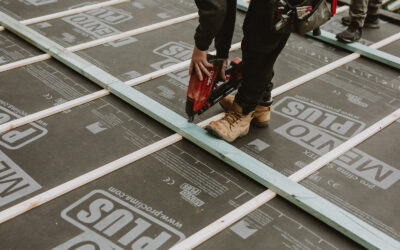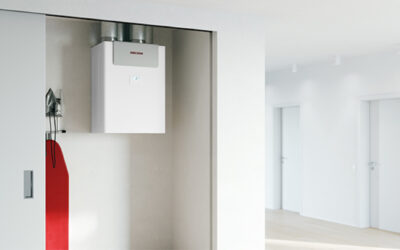In a previous post about single vs double vs triple glazed windows, we discussed the importance of multi-glazed windows for your sustainable home. And while having multi-glazed windows are a great step towards improving the energy efficiency of your home, they’ll only be partially effective if you still have drafts, or poor insulation. The window frames themselves have a large bearing on the overall performance as well, so let’s take a look at your options now.
One of the most overlooked aspects of a window that has an impact on its overall effectiveness is the material the frame is made of. In Australia, these materials are typically timber, aluminium or uPVC, and each has its own unique properties that will affect the look, feel and effectiveness of your home. Taking the time to consider the functionality, energy efficiency, maintenance requirements and insulative capabilities of your window frames will only benefit you in the long run. We compare the three popular window frame materials and have a final say on which one we recommend when combined with double glazed glass panes.
TIMBER FRAMES
TIMBER PROS
1. They look good – One of the strongest cases for timber is its aesthetic appeal. Well-constructed timber windows, made from quality timber, can look amazing in any home.
2. They’re energy efficient – Another argument for timber is its energy efficiency. Studies have shown timber windows are more energy efficient than aluminium, thanks to the natural insulating properties of timber vs the thermal conductivity of aluminium.
3. They last – Timber frames are durable; they don’t corrode or rust overtime. If maintained well, they’ll last a long time and can help boost the value of any property they’re installed into.
4. They’re versatile – Timber is probably the most versatile out of all three materials. You can paint, varnish and make timber frames any size and colour you want, and therefore have greater freedom matching them with the overall look and feel of your home.
5. They’re renewable and sustainable – Timber is an organic, natural, readily available material, and since it’s considered to be a sustainable building material because it’s derived from a renewable source, installing timber frames will mean you’re diminishing your carbon footprint.
TIMBER CONS
1. They’re a bit of work – Timber requires a bit more long-term maintenance than aluminium or uPVC, such as regular painting and polishing. However, they need to be repainted just as frequently as you need to re-paint the rest of your home (another thing we’ll be discussing soon), so if you’re going to paint your walls, you may as well paint your windows while you’re at it.
2. They’re expensive – Timber windows can be expensive. However many timber window manufacturers argue that while they may cost more initially than their aluminium counterparts, the difference will be made up for in time by savings in energy costs.
3. They’re prone to termites
ALUMINIUM FRAMES
Aluminium is the most commonly used material in double glazed window frames in Australia. And while it’s known for being incredibly durable, not many people realise that it’s terribly energy efficient.
ALUMINIUM PROS
1. They’re strong and they can last – Aluminium windows are structurally the strongest type of frame and have the potential to last up to 20 years. They’re durable as well, as they’re resistant to denting and weathering. However, if they aren’t properly coated or maintained, they are susceptible to rust and corrosion. And if you live on the Australian coast, this can be bad news as salty sea breezes are a regular occurrence.
2. Generally cheaper than timber – It’s hard to compare costs when there are so many different types of both aluminium and timber, but in general aluminium can be the cheaper option. The cost of aluminium frames depends on the section size and thickness used, as well if they’re standard vs thermally broken. Standard aluminium frames are lightweight and low cost but very poor in energy efficiency, while thermally broken aluminium frames improve the energy efficiency but come with a huge price increase – up to four times more expensive – so for the purpose of this article we’ll generally be referring to standard aluminium as a comparison.
3. Highest BAL rating – BAL stands for Bushfire Attack Level and represents a scale used to determine a buildings risk of catching on fire, particularly in areas that are likely to experience bushfires. The purpose of the rating is to help prevent bushfires from destroying homes and spreading to other areas. BAL-40 is the second highest BAL rating where the risk of exposure to flames is significantly increased and construction requirements include using materials that are highly resistant to flames. At this level, your timber and uPVC options fall behind – metal is the only approved material for buildings constructed in these areas.
4. Lightweight, versatile and sleek – Aluminium frames are lightweight, making them cheaper and easier to install than timber. They’re also available in an array of sizes and types, and aluminium can often be fabricated to meet many architectural specifications that other materials can’t match. Another case made for aluminium is that modern designs and powder coatings can make them a good choice for modern homes as their sleek, minimalist frames suit minimalist architecture and interior design.
5. Generally low maintenance and easy to clean – Aluminium does require less maintenance and is easy to clean, however, as mentioned above, it’s critical to stay on top of the cleaning and coating of your aluminium frames to deter rust and corrosion.
ALUMINIUM CONS
1. Very low energy efficiency – Aluminium is a great conductor of heat and therefore provides poor thermal insulation and high thermal conductivity. In summer, when the sun beats down on your aluminium window frames, the metal will store the heat, transferring it into your home. While in winter, aluminium will get cold very quickly, bringing cold temperatures inside and causing condensation to form – a big risk for the buildup of mildew and mould.
2. Poor insulation – Another issue with most standard aluminium frames is they’re not airtight or well sealed. This can pose a problem when trying to keep cool air in the house in summer, as well as feeling drafts in winter. Even if the window is well sealed and you’re using double glazing, there’s still the problem of poor energy efficiency of the frame that can only be eliminated by using the super expensive thermal break aluminium.
3. Prone to oxidation – Aluminium will oxidate over time and can corrode quickly if suitable precautions against this aren’t taken, especially if you live near coastal environments.
UPVC FRAMEs
uPVC stands for unplasticized polyvinyl chloride, and uPVC frames are becoming more and more popular in Australia because of their high energy efficiency and value for money.
UPVC PROS
1. Highly energy efficient – uPVC is an extremely thermally efficient material, provides the best water and air tightness seal, and can therefore provide your home with superior insulation. Not only in terms of temperature insulation, i.e. keeping the house cool in summer and warm in winter, but also by way of sound insulation as well.
2. Value for money – Perhaps one of the main benefits is that uPVC windows are usually cheaper to buy than comparably performing aluminium and timber frames. They have a great value for money proposition when compared to higher end aluminium and timber windows, however they’re still more expensive than the basic low cost, low performance timber and aluminium options.
3. Low maintenance and easy to clean – uPVC requires very little maintenance and negates the need for periodical paint work or lubrication as they won’t rust, rot or corrode over time. It’s also very easy to clean; just wipe down with a cloth dipped in any soapy water and your window will be kept as new as ever.
4. Durability – uPVC frames can last upward of 25 years if maintained correctly. They have a UV resistant blend and don’t fade, warp or crack under the pressures of the Australian summer sun. Because of its durability, uPVC provides a long-lasting and dependable framing support.
5. Modern appeal – For a modern home that consists of many modern fittings and features, uPVC can be a good option, as it will maintain the style of your home.
UPVC CONS
1. Not as aesthetically pleasing – uPVC often doesn’t appear to be as attractive due to its simple plastic look and can lack the aesthetically superior look of a timber frame.
2. Lack of versatility – Despite modern technology leading to different kinds of textures and colours, uPVC windows aren’t a great choice if you want varied colours or want to customize the windows according to your choice or personal preference. On the other hand, timber and aluminium allow the use of paint and varnish in any colour, which is often a better option to blend in with your home and its style and décor.
3. Quality and installation matters – The quality of the uPVC you use is as important as the product itself. When purchasing for Australian use it’s worth staying clear of uPVC manufactured for a less demanding climate. Additionally, precision and quality of installation works have a great influence on the insulating and performance properties of the window as well.
Lower value – While uPVC may provide you with good value for money initially, the resale value of your home doesn’t get a boost as compared to timber fittings.
OUR RECOMMENDATION FOR A SUSTAINABLE HOME
When it comes to what will look and perform best, and also fit most people’s budgets, we think timber frames provide the perfect middle ground sweet spot. With aluminium windows it’s always cost vs performance – low cost aluminium windows have very poor energy efficiency, whereas thermally broken aluminium comes with a big price tag that can be hard to justify. While with uPVC, the high-energy efficiency can come with a compromise on a suave and sophisticated look. At Lou Projects we’ve built homes using uPVC frames that we love the look of, however timber is our overall winner as it’s a natural, sustainable material that provides good energy efficiency and looks amazing as well.




